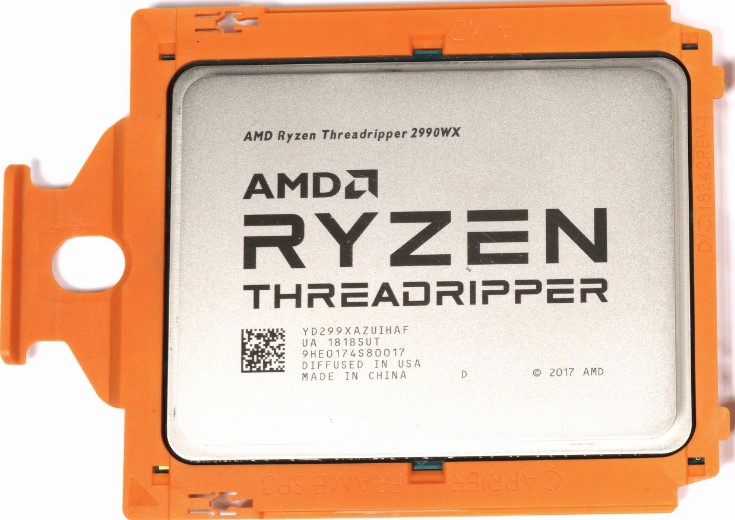Ryzen Threadripper 2 (2990WX and 2950X) Review: AMD Unleashes 32 Cores
Why you can trust Tom's Hardware
Rendering, Encoding & Compression
Rendering
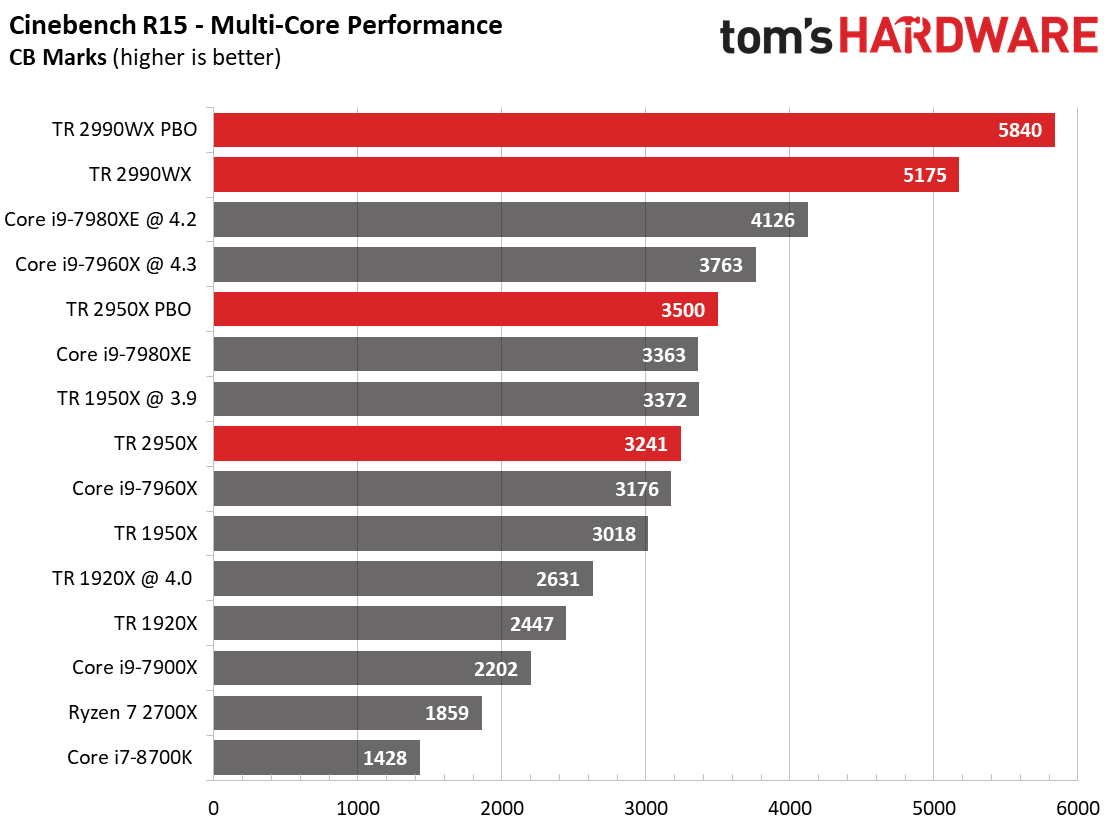

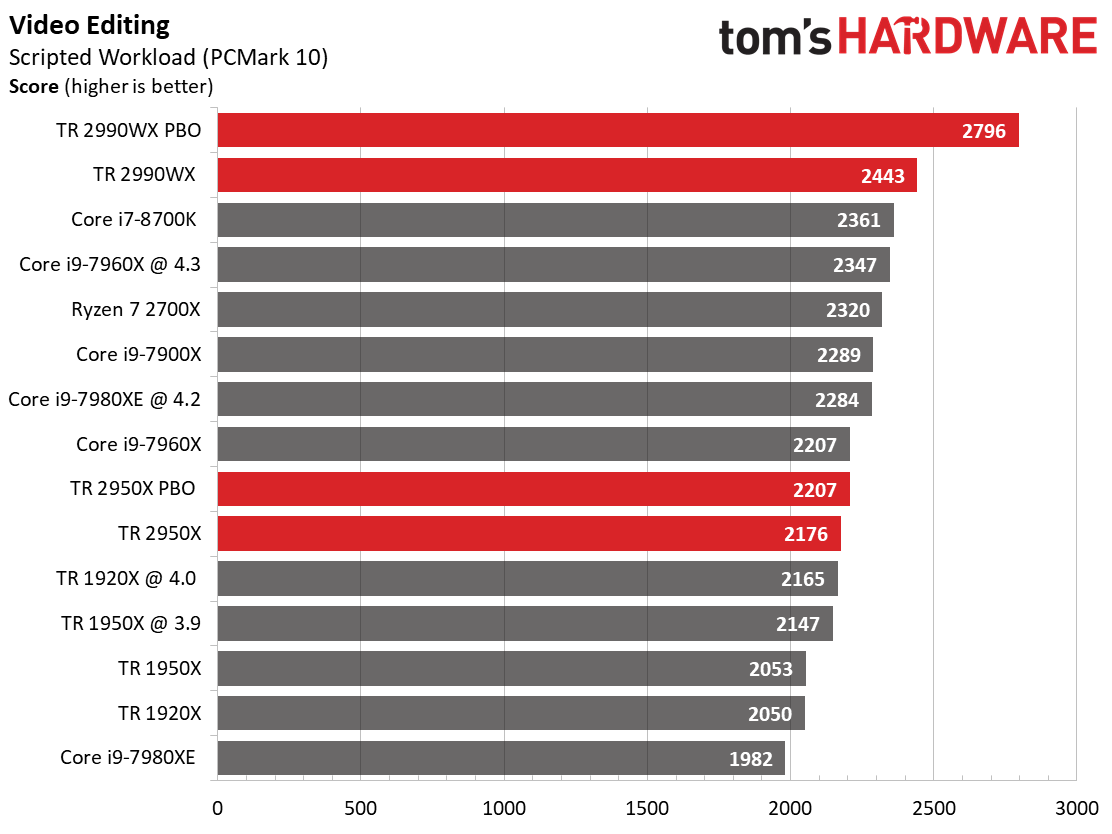
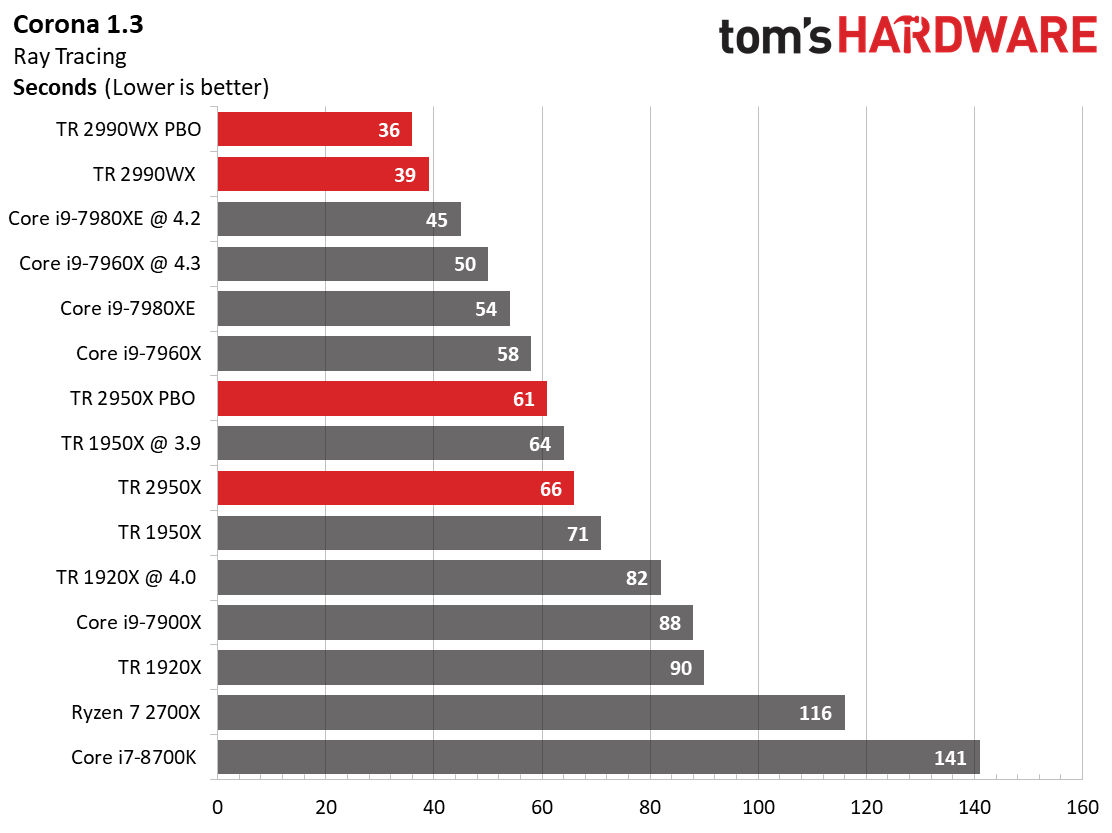
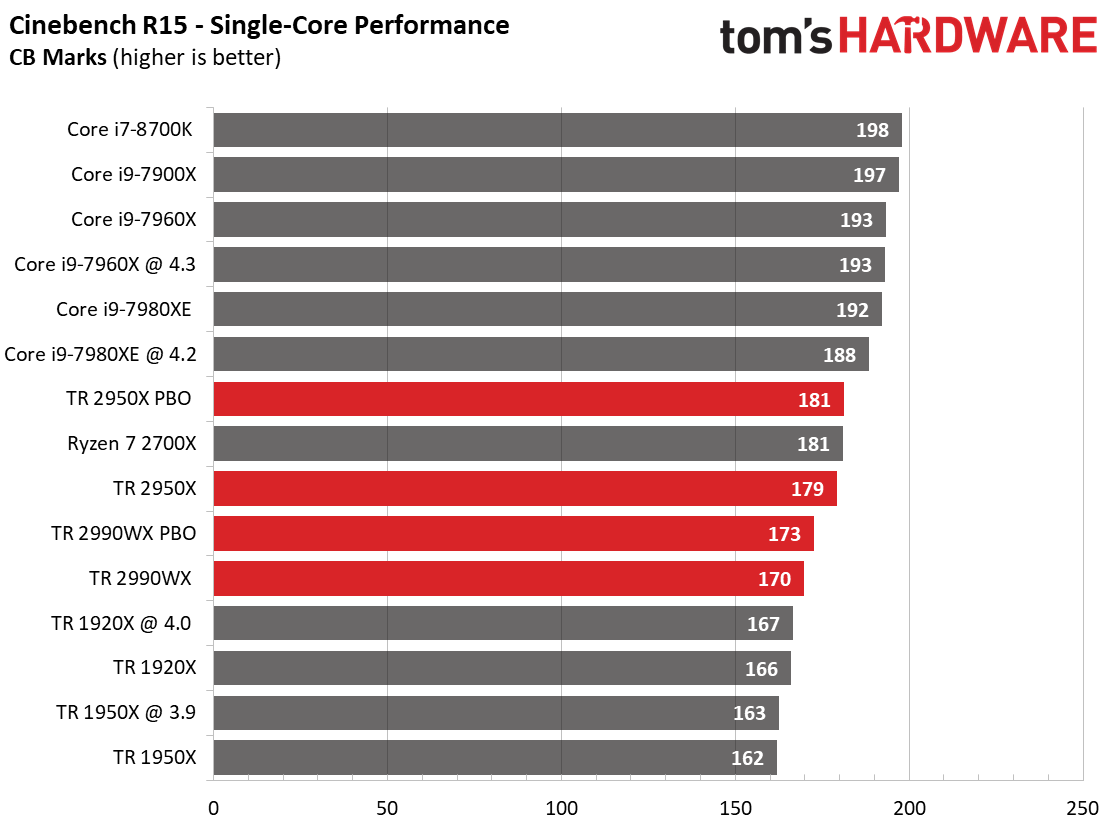
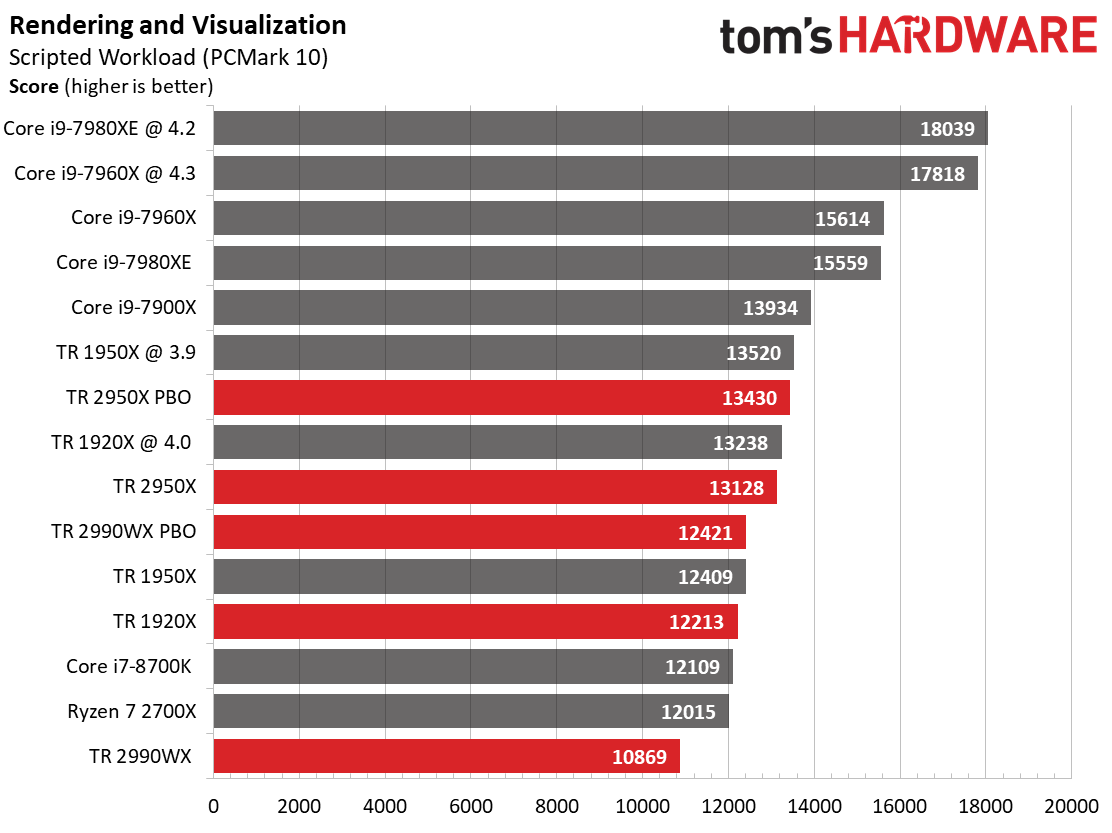
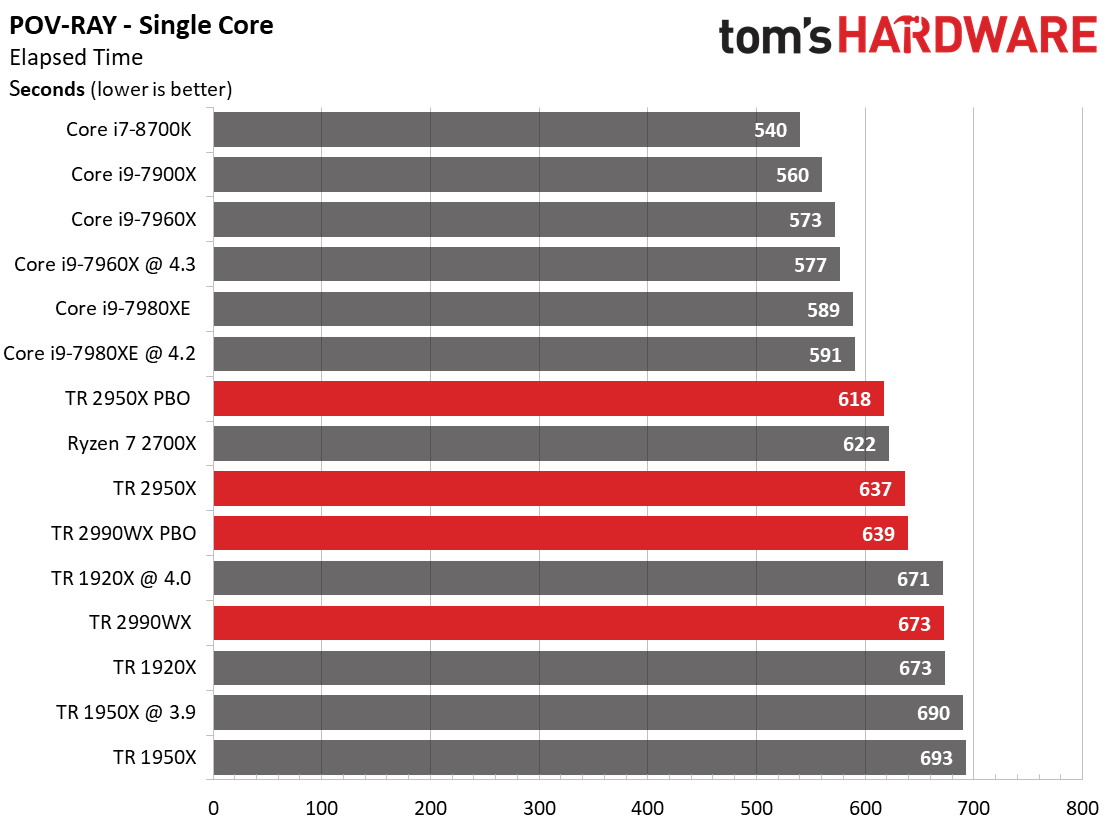
Threaded workloads remain an uncontested strength of AMD's Zen-based processors and their hefty core counts. Many of these workloads stress the memory subsystem, which reduces the advantage of the Threadripper 2990WX’s hefty core count due to accesses from the remote memory controllers.
The Ryzen line-up dominates the multi-core Cinebench and POV-Ray tests, but the 2990WX only provides a 35% speed over the 2950X in the POV-Ray benchmark. In light of its 100% increase in cores, that doesn’t represent the best scaling possible. The 2990WX provides a 66% performance improvement in the Cinebench score.
Corona also scales well as the Threadripper 2990WX unleashes the full might of its 64 threads. Intel’s processors still hold the per-core advantage in the single core POV-Ray and Cinebench tests, but its easy to see that AMD’s multi-die design can help offset that advantage with extra cores in threaded workloads.
Encoding & Compression
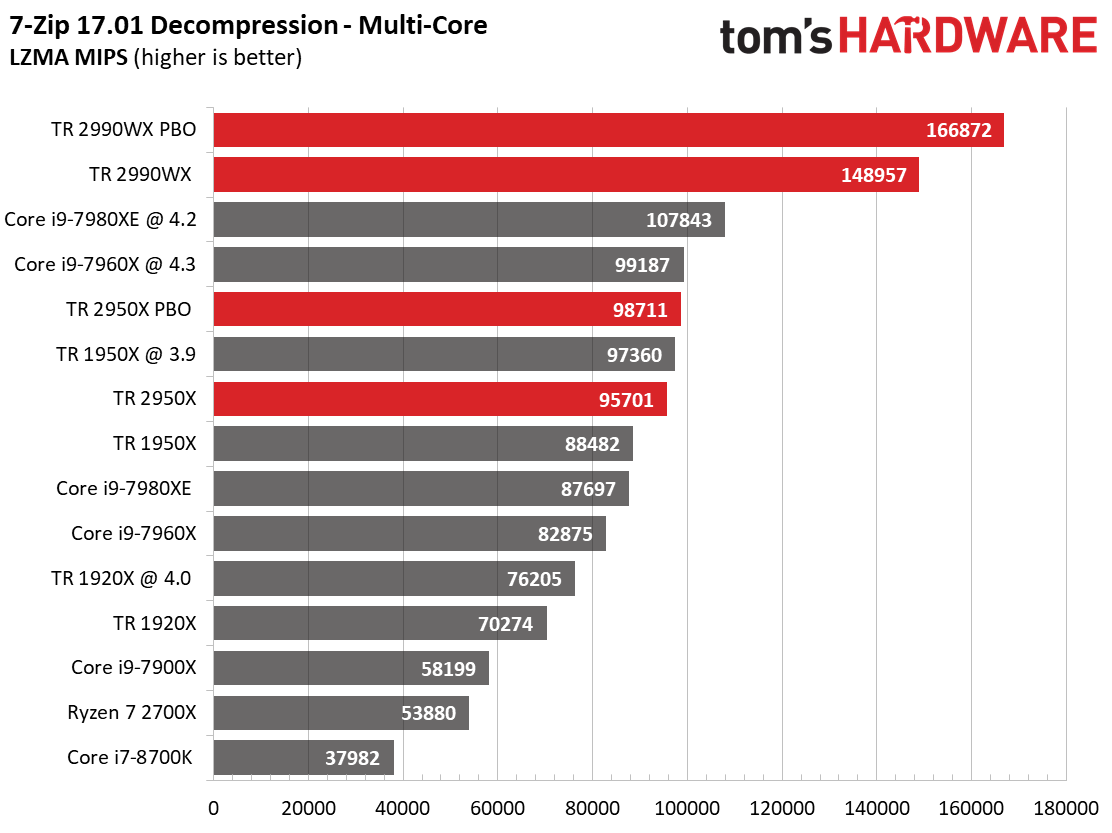
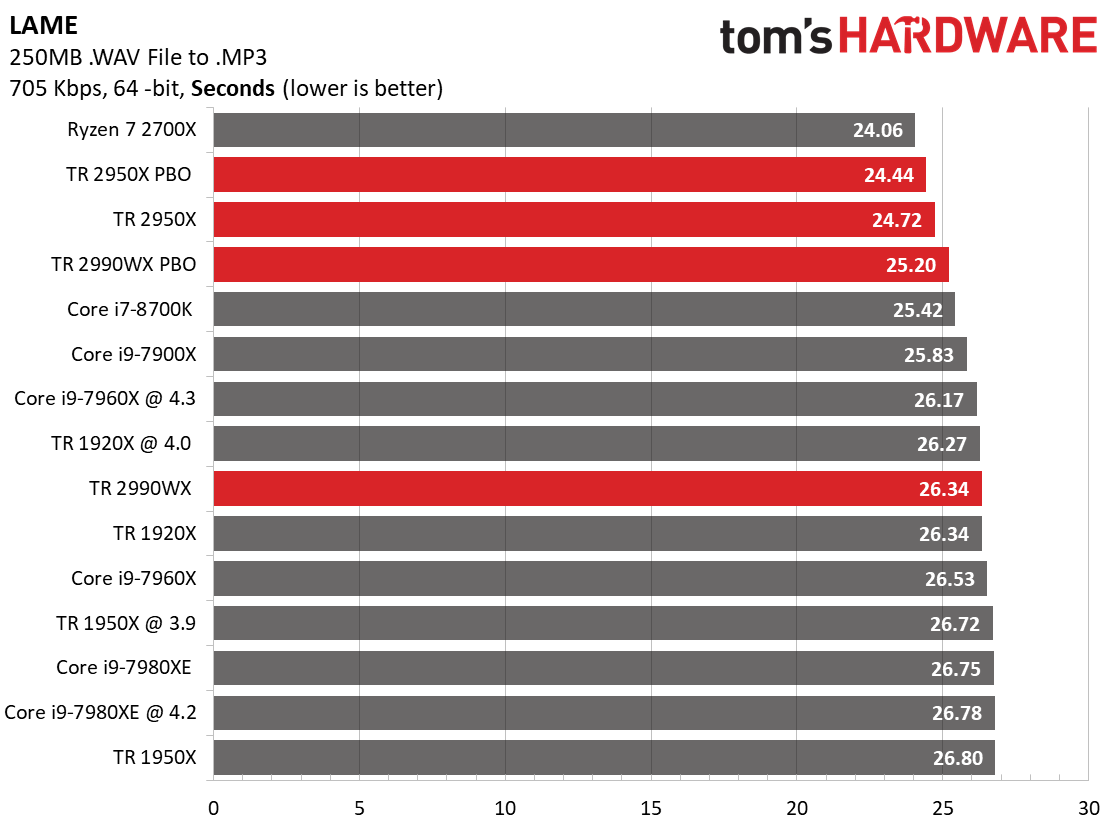
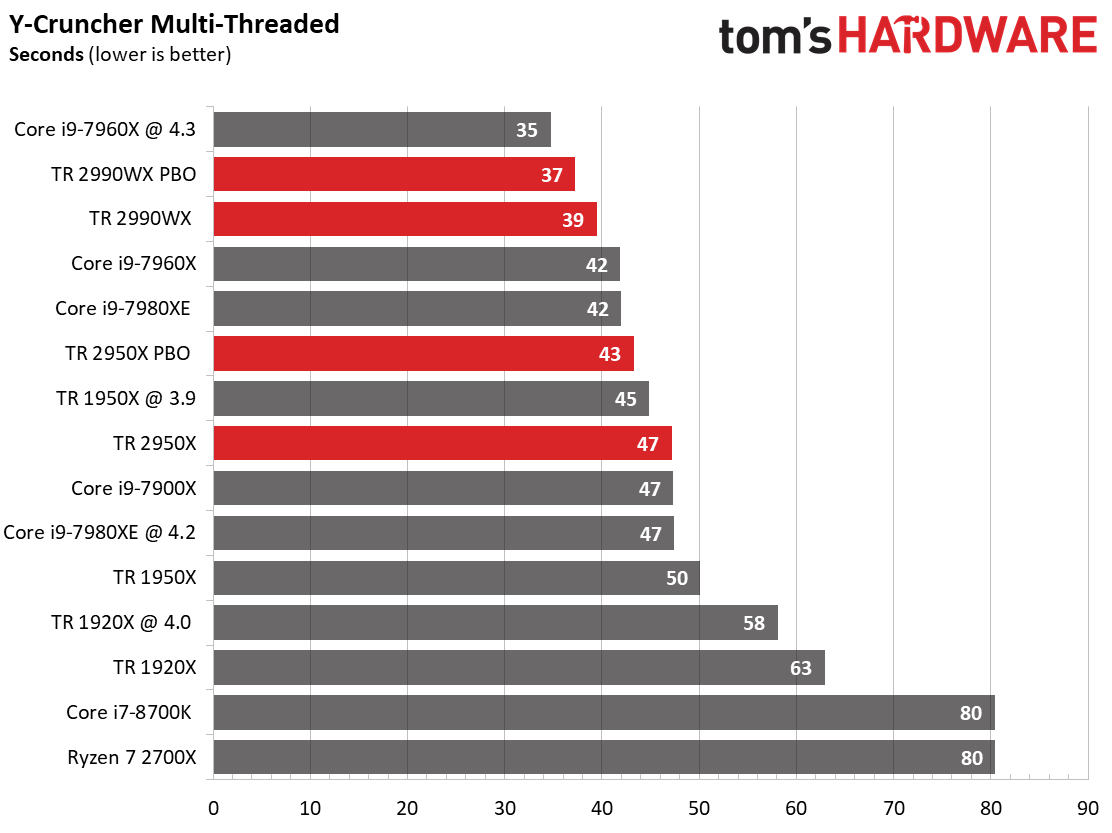
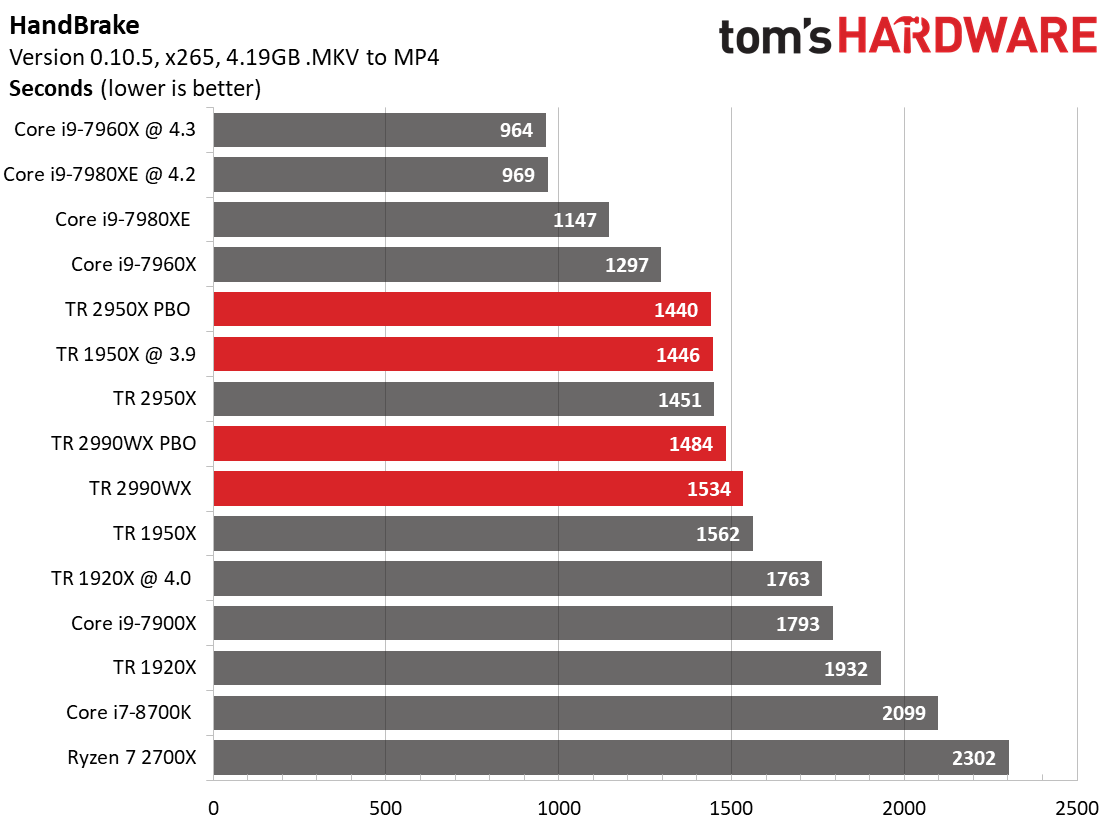
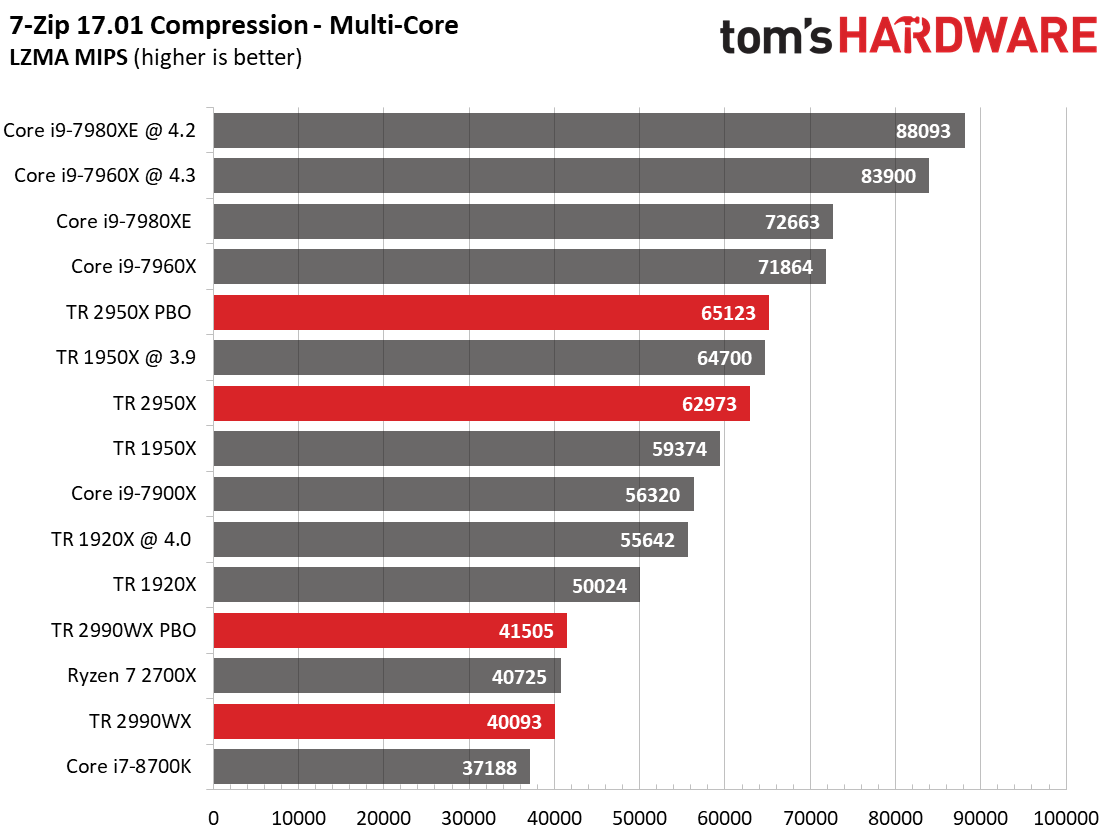
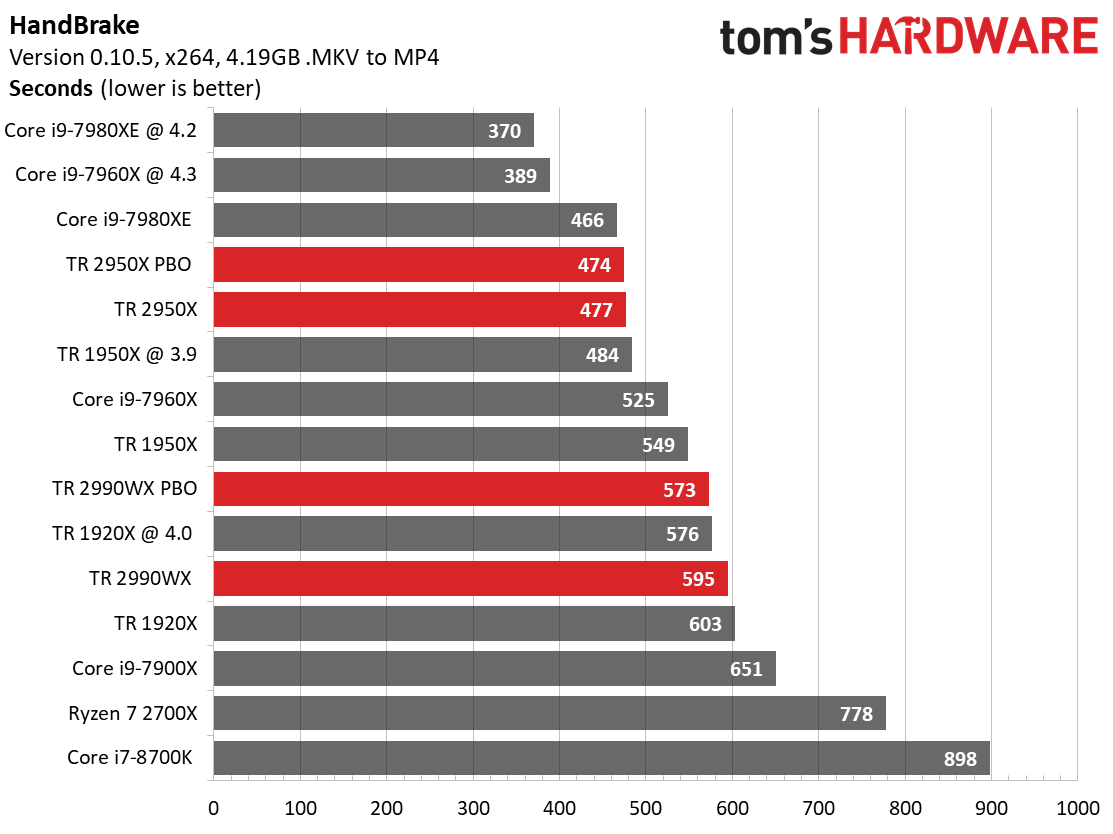
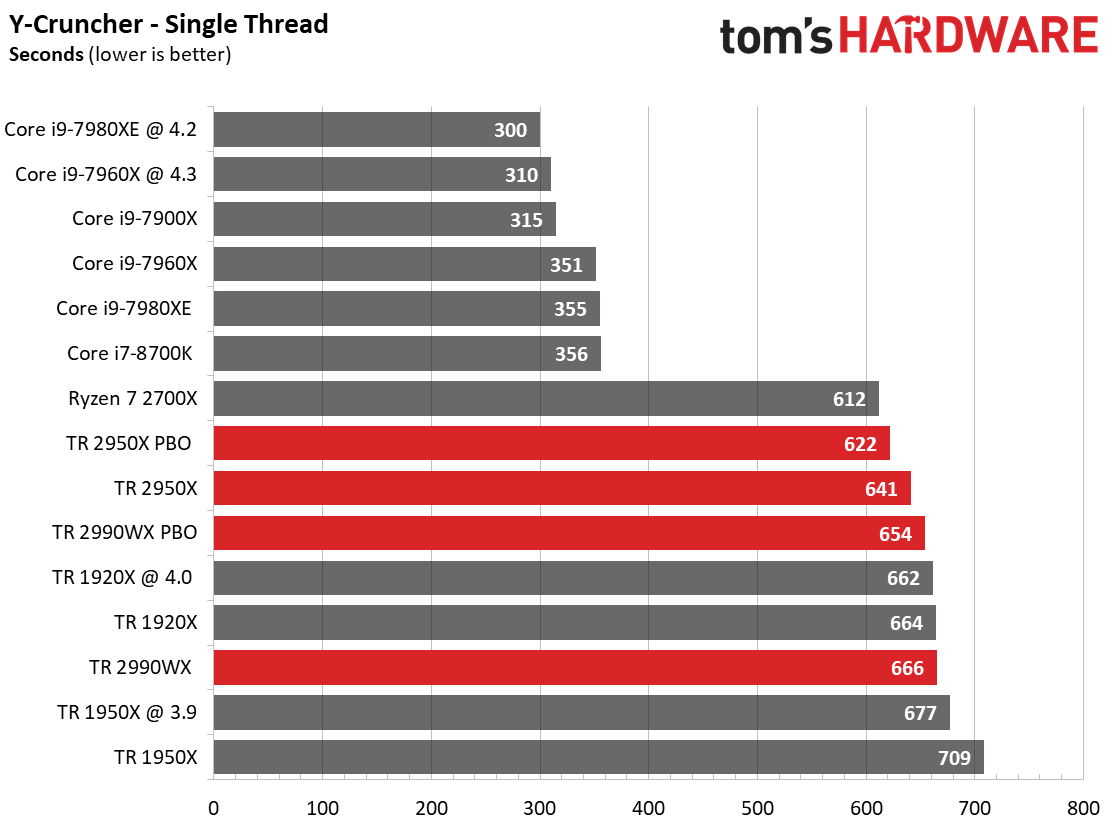
Our threaded compression and decompression tests work directly from system memory, removing storage throughput from the equation. This workload benefits heavily from threading, but either memory throughput or poor software scaling is holding the 29990WX back from realizing
its potential in the compression test. Threadripper 2950X, which comes with two die outfitted with directly-attached memory controllers, offers a nice boost over its predecessor at stock settings. The Core i9-7980XE reigns supreme in this test, which could be due to its single monolithic die and mesh architecture that facilitates much higher bandwidth to the cores. In contrast, the decompression test highlights the 2990WX’s devastating performance when the cores are properly fed.
y-cruncher, a single- and multi-threaded program that computes pi using AVX instructions, is a great test to measure Threadripper 2’s AVX performance. Intel’s Core i9 employs two 256-bit AVX FMA units per core that operate in parallel, whereas Ryzen's Zen architecture divides 256-bit AVX operations across two FMA units per core. That means the 2990WX’s two extra die bring much more AVX performance to the table, provided you can feed the data-hungry AVX operations. The 2990WX nears the top of the chart, but scaling is sub-optimal compared to the 2950X, which has half the AVX units. This could again fall back on poor memory subsystem performance, which hinders some applications.
That same story plays out in Handbrake. AMD said during its briefings that Handbrake is cache dependent and doesn’t utilize cores fully, thus yielding a smaller performance boost than expected. The Handbrake x265 test, which uses a heavier distribution of AVX instructions than the H264 test, yields a minimal performance advantage for the 2990WX compared to the 2950X. We think that memory access plays a larger role in this result than sub-optimal software scaling.
MORE: Best CPUs
Get Tom's Hardware's best news and in-depth reviews, straight to your inbox.
MORE: Intel & AMD Processor Hierarchy
MORE: All CPUs Content
Current page: Rendering, Encoding & Compression
Prev Page Office & Productivity Next Page Workstation - Graphics
Paul Alcorn is the Editor-in-Chief for Tom's Hardware US. He also writes news and reviews on CPUs, storage, and enterprise hardware.
-
Rdslw first table is broken 32/64 cores/threads :)Reply
Ryzen Threadripper 2990WX
Ryzen Threadripper 2950X
Socket
TR4
TR4
Cores / Threads
16 / 32
16 / 32 -
philipemaciel Wow, while the 2990WX is a bit of a letdown, the 2950X is a nice surprise. Plenty of bang for your buck!Reply -
alves.mvc Why does Tom's Hardware stopped using the HPC benchmark? It was the most interesting measurement for me that work daily with finite differences and finite elements. Can you return to that?Reply -
totaldarknessincar Seems to me the best of both worlds continue to be Intel's 7900x which sells for $699 at microcenter. You get great gaming performance, and great multithreaded performance, and it's not 12-1800 bucks as some of these mega-threaded cards are.Reply
Despite all the fan-fare, it seems the 7980xe actually remains the best processor when overclocked overall.
Lastly for gaming, it's still 8700K or 8086 as best, with the 2700x from AMD being the best when you factor gaming and some multi-threaded stuff, while being very competitive price wise. -
feelinfroggy777 Very surprising performance from the 2950x. Almost enough to consider parting ways with my 1950x. Maybe when the pricing comes down some from the 2950x in a few months I will consider.Reply
The 2990wx on the other hand is a slight let down. Too bad they could not get the scaling down between the dies like they did with Threadripper 1. But I have read that was going to be an issue. Maybe AMD did not want the 2990wx to cannibalize their Epyc market.
With that being said, the 2990wx is still a modern marvel of technology, even more so when you consider the price. Only couple of years ago a CPU with less than a third of the cores cost just as much.
Competition sure is grand! -
basil.thomas Looks like Intel has an opportunity to bite AMD when they release their 28-core processor. I have a threadripper 2/x399 system but if I upgrade to the 2990wx, I will also upgrade the motherboard and the power supply as well. I think I may wait until the Intel 28 core comes out and see what kind of performance it delivers as I too notice running custom AI apps on the threadripper is barely faster than my old x99/6850 motherboard overclocked @ 4.3Ghz. I want max performance if I am going to pay over $1800 for the flagship which means core wars is just starting...Reply
MOD EDIT: watch your profanity -
ffleader1 Reply
Seem to me that you are mistaking best of both work with jack of all trade. No one who takes rendering seriously would want to sacrifice the performance for gaming. For that price, they may as well grab a 1950X. Sure you lose in gaming, but gain a huge jump in rendering. Also, I don't know about Microcenterbut it's still 1k on Amazon while 1950X is $850. 7900X is like a really really bad choice lol.21228046 said:Seems to me the best of both worlds continue to be Intel's 7900x which sells for $699 at microcenter. You get great gaming performance, and great multithreaded performance, and it's not 12-1800 bucks as some of these mega-threaded cards are.
Despite all the fan-fare, it seems the 7980xe actually remains the best processor when overclocked overall.
Lastly for gaming, it's still 8700K or 8086 as best, with the 2700x from AMD being the best when you factor gaming and some multi-threaded stuff, while being very competitive price wise.
